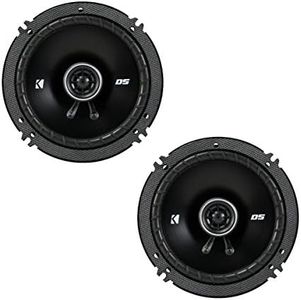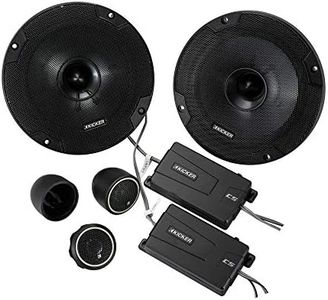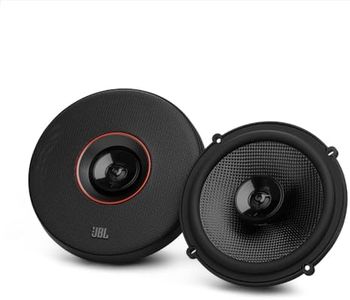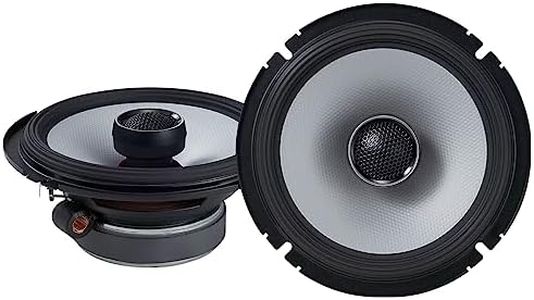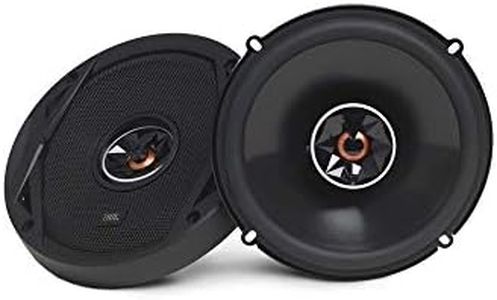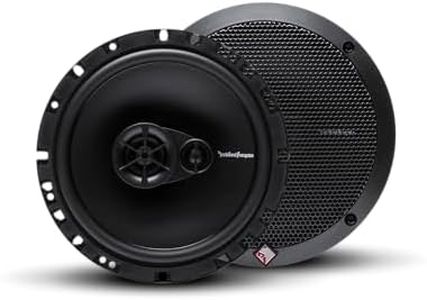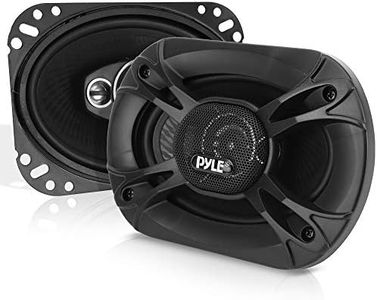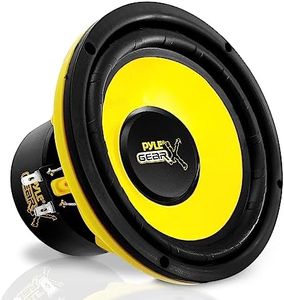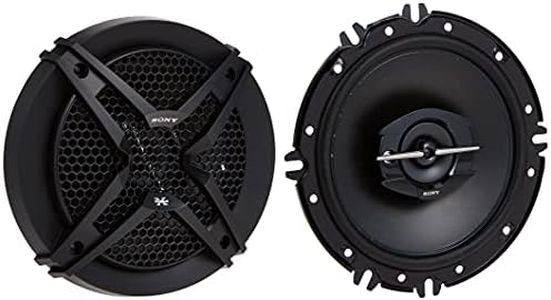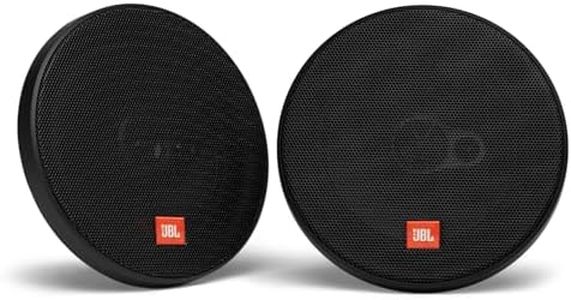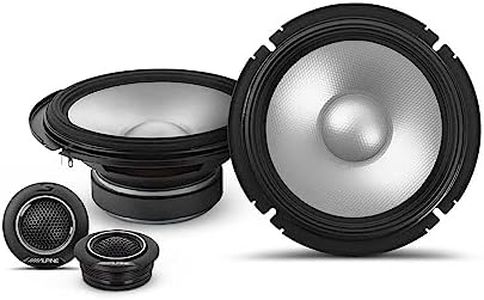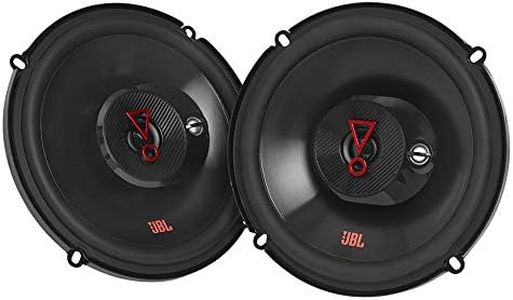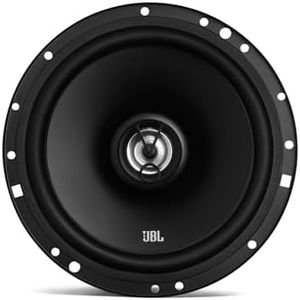We Use CookiesWe use cookies to enhance the security, performance,
functionality and for analytical and promotional activities. By continuing to browse this site you
are agreeing to our privacy policy
10 Best 6 5 Car Speakers For Bass
From leading brands and best sellers available on the web.Buying Guide for the Best 6 5 Car Speakers For Bass
Choosing the right 6.5-inch car speakers for bass involves more than just picking the biggest or loudest option. It's about matching the speakers to your music preferences, your car's audio system, and how you like your music to sound. Pay attention to the technical details that indicate how the speaker handles low frequencies, the types of materials used, and how the speaker will fit into your car's existing setup. Understanding these features will help you make an informed choice that delivers the thumping bass you love without distortion or damaging your system.Power Handling (RMS and Peak)Power handling tells you how much power the speaker can safely handle from your car’s audio system, usually listed as RMS (continuous power) and Peak (maximum burst). RMS is the more important number for everyday use. Higher RMS values mean the speaker can play louder and handle deeper bass without distortion. If you enjoy music with heavy bass or play your music loudly, look for speakers with higher RMS (e.g. over 60 watts). For casual or background listening, lower RMS ratings (around 30-50 watts) are adequate. Matching your speakers’ RMS with your car stereo or amplifier output is key to avoid damaging them.
SensitivitySensitivity measures how efficiently a speaker converts power into sound, usually shown in decibels (dB). Higher sensitivity (around 90dB or more) means the speaker will sound louder with less power, making it a great fit for stock or lower-powered systems. Lower sensitivity speakers (under 88dB) need more power to reach the same volume, which can be ideal if you are running a powerful external amplifier. If you want deeper bass but only have a factory head unit, go for higher sensitivity. For custom setups with powerful amps, you can go with lower sensitivity as long as the power handling matches.
Frequency ResponseFrequency response shows the range of sounds the speaker can reproduce, measured in Hz (hertz). The lower the first number, the deeper the bass the speaker can theoretically reproduce (e.g., 40Hz or lower is desirable for good bass). However, 6.5-inch speakers have physical limits, so don’t expect subwoofer-level bass, but look for lower frequency numbers if you want strong, punchy lows. If you listen mostly to vocals or treble-heavy music, a higher frequency range will be fine; for bass-heavy styles, look for the lowest frequency response possible in this speaker size.
Woofer MaterialThe woofer is the part of the speaker that produces bass. Materials like polypropylene, mica, or certain blends are popular because they are lightweight, stiff, and resistant to moisture—important for car environments. Better woofers deliver cleaner, deeper bass and tend to last longer. Look for durable materials if you want your bass to stay tight and clear over time, especially in humid or sunny environments. If deep, clean bass is a top priority, pay attention to both woofer size and the material’s quality.
Speaker Design: Component vs. Coaxial6.5-inch speakers come mainly in two designs: coaxial (all-in-one, with the tweeter inside the woofer) or component (separate woofer and tweeter). For bass, the key part is the woofer, but component systems may give you more flexibility for placement and quality, resulting in richer, fuller sound. Coaxial speakers are easier to install and still provide good bass if chosen with quality materials. If you want the best performance and are willing to spend time on installation, go with component. For easier upgrades and solid bass, coaxials work well.
Mounting Depth and FitMounting depth is how much space the speaker needs inside your door or panel. It’s important because a speaker that’s too deep won’t fit or could hit your window mechanism. Always check your vehicle’s available space and compare it to the speaker’s mounting depth requirement. If your car has limited space, choose speakers with a shallow mount design. Making sure the speaker fits ensures you get the best sound without installation headaches.
